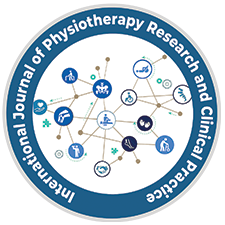


International Journal of Physiotherapy Research and Clinical Practice
DOI: 10.54839/ijprcp.v2i2.tomar
Year: 2023, Volume: 2, Issue: 2, Pages: 6-10
Original Article
Shilpi Tomar1,∗, Samuel Paul Isaac1
1Krupanidhi College of Physiotherapy, Bangalore, Karnataka, India
Objective: Low back pain (LBP) is a prevalent health concern among computer professionals, particularly in India’s Information Technology sector, owing to prolonged sitting, poor posture, and inadequate ergonomic setups. This study aimed to assess the combined effect of dynamic back extensor exercises and ergonomic interventions on reducing LBP and associated disability in computer professionals. Methods: This experimental study included 40 computer professionals aged 25-35 years diagnosed with acute to sub-acute LBP. The participants were randomly assigned to two groups: Group A (dynamic back extensor exercises) and Group B (ergonomic measures). Pre- and post-intervention assessments were performed using the Visual Analog Scale (VAS) for pain and the Oswestry Disability Index (ODI) for disability. The interventions lasted for three months, with Group A performing dynamic exercises, while both groups received ergonomic advice. Findings: Both interventions resulted in significant reduction in pain and disability (P < 0.001). Group A (dynamic back exercises) showed a greater reduction in pain intensity (VAS: 4.92 to 2.82) and disability (ODI: 28.6 to 16.48) compared to Group B, where VAS reduced from 4.87 to 3.22, and ODI from 27.77 to 18.39. Novelty: This study demonstrates the synergistic effect of both approaches in reducing pain and disability. offering practical strategies for managing LBP in sedentary professions and improving both workplace productivity and employee health.
Keywords: Low Back Pain, Dynamic Exercises, Ergonomic Interventions, Disability, IT Professionals
@ 2023 Published by Krupanidhi College of Physiotherapy. This is an open-access article under the CC BY license (https://creativecommons.org/licenses/by/4.0/)
Subscribe now for latest articles and news.